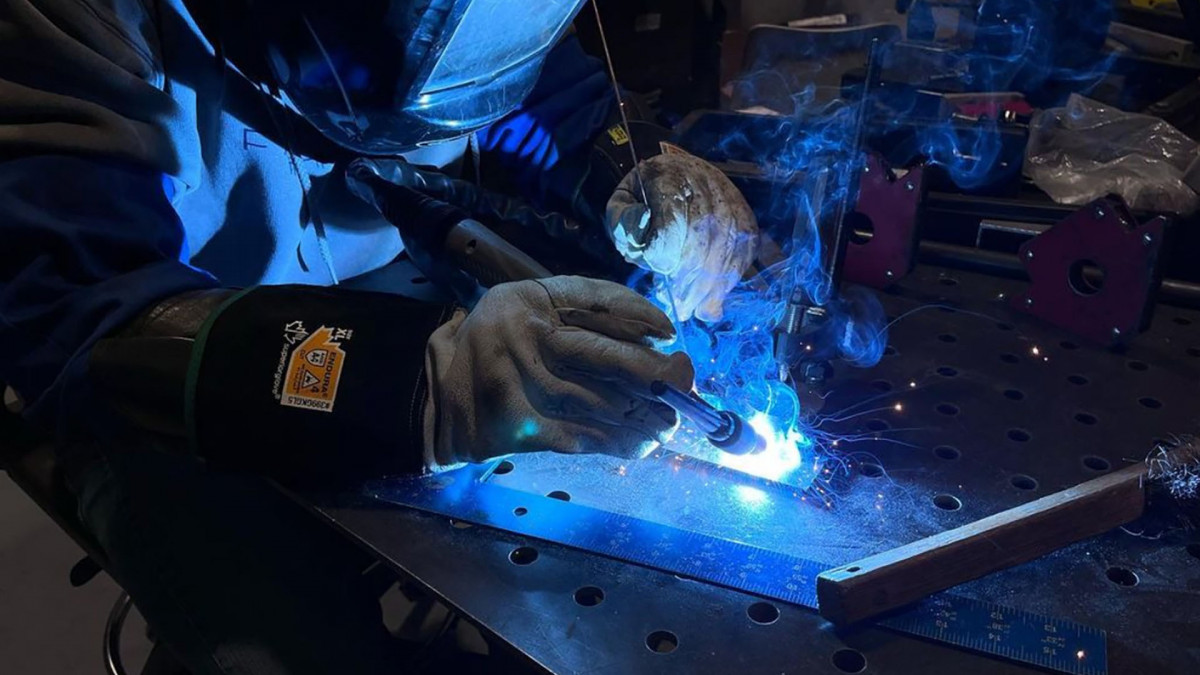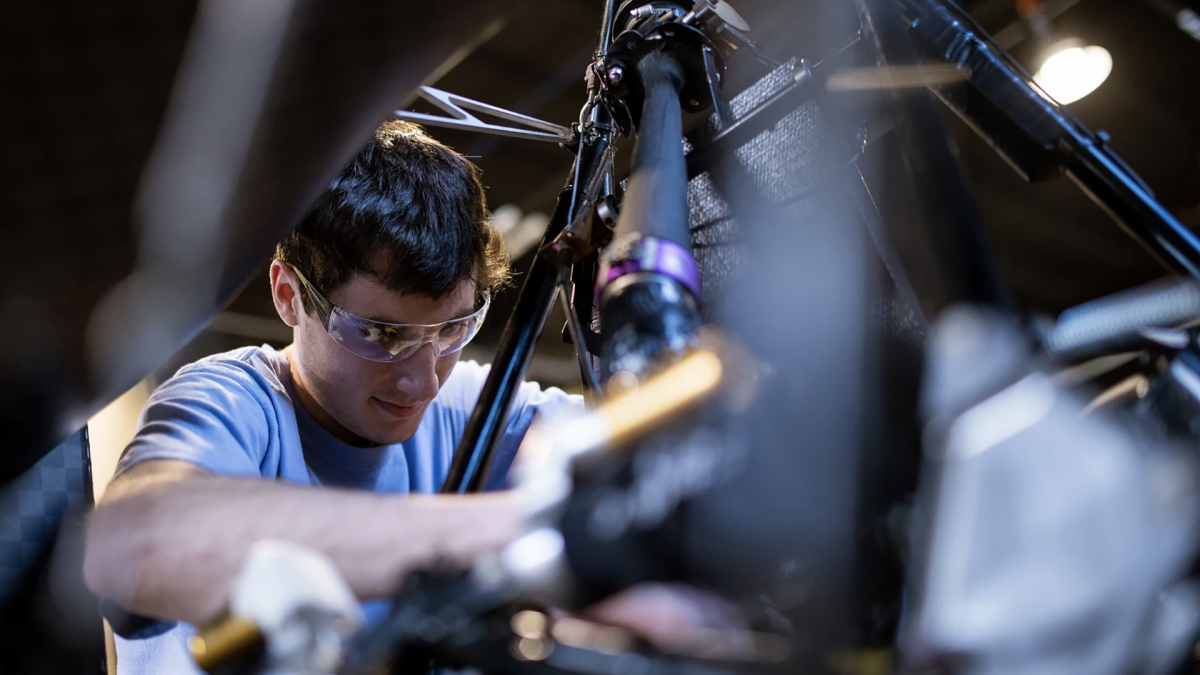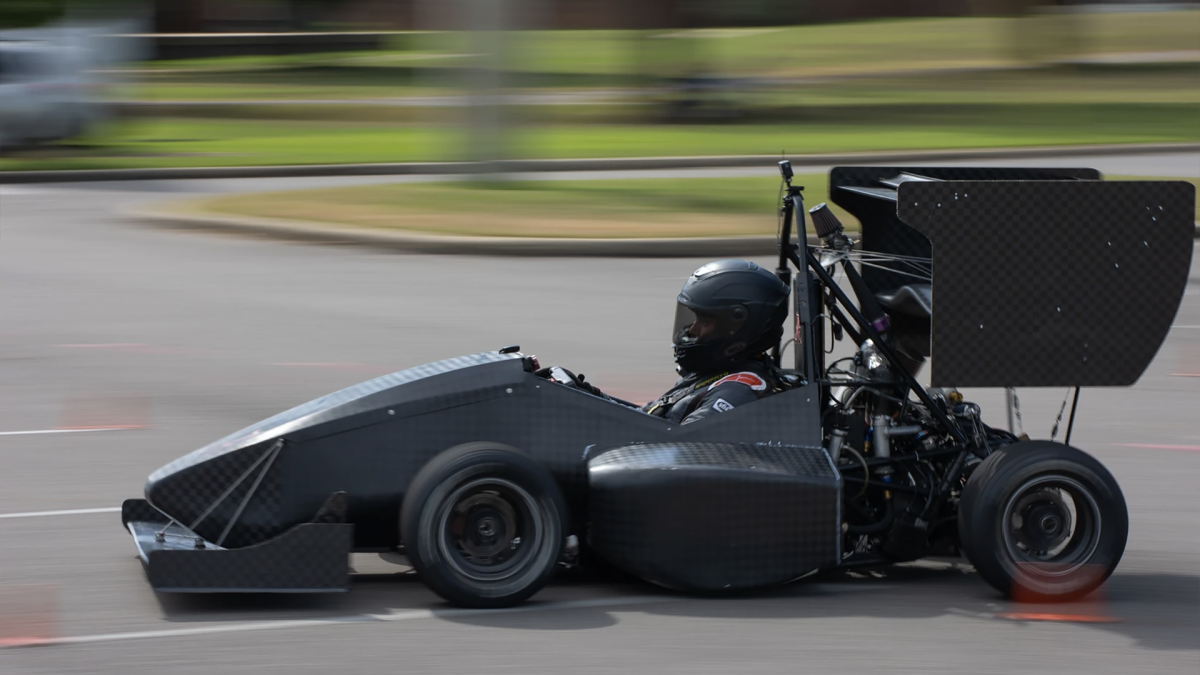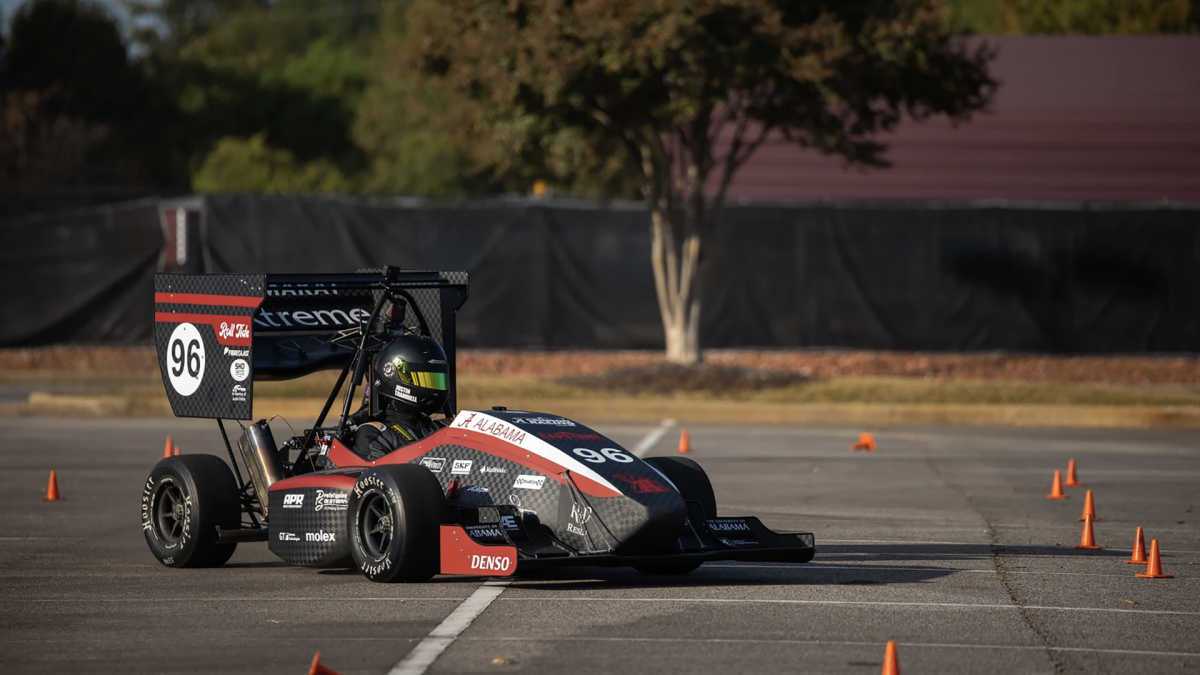
UA Motorsports Initiative

The University of Alabama’s student population has more than doubled over the past two decades, while the academic level of the incoming freshmen has increased by as much as 25%. This progress has been particularly profound in the College of Engineering. The University has also designated transportation as one of three pillars of emphasis, which is reflected in the growth and success of our automotive engineering competition teams and a significant increase in UA graduates seeking careers in the motorsports and aftermarket industries.
This expansion coincides with unprecedented technical challenges for these industries. The creativity, ingenuity and work ethic that guaranteed success on the racetrack and in the performance aftermarket in the past must now be coupled with the ability to perform high-level simulation, craft precise and optimized designs, and execute complex experimental testing using expensive equipment. These needs will become even more critical as environmental and sustainability concerns grow. This environment creates significant opportunities for businesses to find mutually beneficial partnerships with smaller organizations like our Motorsports Initiative.
The University of Alabama is the right and uniquely qualified partner for such challenges, which sit squarely within our mission to broaden career opportunities for our graduates and facilitate the sustained success of our industrial stakeholders.
Our Qualifications
The University’s directive to advance transportation systems has motivated massive investments in state-of-the-art automotive research and development infrastructure that attracts top faculty in automotive and related areas. Prospective students touring our campus are drawn to these resources and motivated to pursue a variety of automotive careers. A substantial fraction of these develop a passion for motorsports, which is reflected in the significant growth in our Formula and Baja SAE programs, EcoCAR and our world-leading Autonomous Indy Challenge team. This passion is clear to our faculty and administration, as well, which is why we are proud to announce The University of Alabama’s commitment to the Motorsports Initiative.
This commitment includes baseline funding for motorsports and performance aftermarket-focused graduate and undergraduate students and their advisors to create the Initiative. A partnership with our team will reduce your time and cost barriers, enabling you to collaborate with the University’s faculty and students. We have the tools to help you solve industry challenges and complete your projects, ranging from quick turn-around solutions to long-term research and development. Shareholders who partner with the Motorsports Initiative can leverage UA’s state-of-the-art resources including:
- Vehicle & engine testing and certification laboratory
- Dynamic & steady flow characterization laboratory
- Spray visualization & combustion analysis laboratories
- Material analytical characterization facility
- Rapid prototyping & foundry facilities
- Automated manufacturing laboratory
Our Facilities
The Alabama Analytical Research Facility (AARC)
The AARC is a core facility that houses among the most capable suite of X-ray, electron and ion microscopes at any university in the USA. Its mission is to facilitate collaborative, multi-disciplinary research projects requiring state-of-the-art measurements that characterize structural and chemical material properties exhibited over length scales spanning more than a million orders of magnitude – from meters down to the atomic level. The AARC is available to both on- and off-campus users and may be employed to support industrial projects pursuing product innovation and development breakthroughs. The instrumentation suite enables such pursuit by providing detailed information to uncover how and why certain materials and material configurations exhibit superior performance which can then be used to guide new materials development. These instruments can facilitate next-level failure analysis to guide new, high-performance materials designs. THE AARC has a staff of trained personnel to assist users in identifying the appropriate measurements to meet project objectives, executing the experiments and navigating data analysis processes.
The Alabama Initiative on Manufacturing Development and Education (Alabama IMaDE)
Alabama IMaDE establishes the modernization of manufacturing technology, techniques and workforce education as a new focal point at The University of Alabama. Alabama IMaDE’s mission is to address the future of industrial problems through education, research and service with a systems integration and industry mindset approach. The initiative will produce broadly educated students with a wide range of career opportunities centered on the future of manufacturing and will cultivate an American workforce to lead the global manufacturing sector through the fourth industrial revolution and beyond.
The Engines and Combustion Laboratory (ECL)
UA’s ECL is among the most capable of such facilities at any university in the United States. It consists of 11,000 square feet of high-bay space partitioned into six test cells, four instrument rooms between the test cells, two large workrooms, a central hallway and substantial storage space. Each test cell has between 16 to 32 thousand SCFM of temperature-controlled ventilation air and access to temperature and humidity-controlled combustion air. Additional infrastructure includes compressors to simulate boosted engine operation, roof-mounted evaporative heat exchanges for process cooling water, 70 SCFM compressed natural gas source, and full dilution systems for both heavy-duty engine and light-duty vehicle emission certification testing. The latter is facilitated by a two-roller EPA-certification capable (48-inch rollers) AC-powered chassis dynamometer able to measure the power output of front, rear or four-wheel-drive vehicles up to 14,000 pounds gross vehicle weight and up to 350 hp per axle. AC-powered engine dynos accommodate testing applications from low-speed heavy-duty (2500 to high-speed high-power 9000 RPM, 460 HP) and are capable of reproducing a variety of transient testing schedules, including the EPA transient cycle on heavy-duty engines up to 600 HP.
The Foundry
The Metal Casting and Solidification Research Facility, also known as the Foundry, at The University of Alabama, involves sand, die, investment and centrifugal casting of metals and alloys including gray iron, steel, aluminum, magnesium, superalloys, copper and titanium. The Foundry is equipped with three induction furnaces for melting cast iron, steel, brass, bronze and aluminum-based alloys. The capacity of these furnaces ranges from 50-pound to 200-pound.
Our Capabilities
Computational
Computational and modeling expertise on campus ranges from detailed fundamental analysis, including multi-dimensional computational fluid dynamics, complex non-linear stress analysis, and detailed chemical kinetics, to higher-level dynamic simulations facilitated by tools such as Matlab/Simulink and GT-Suite. The research portfolio of our automotive-focused faculty includes large collaborative efforts that facilitate experimental validation for both the detailed fundamental level simulations as well as our higher-level models, which builds a “trust-but-verify” culture to our simulation efforts. Students working on our AVTC programs develop extraordinary skills for control-system development and the associated software, model and hardware-in-the-loop vesting and validation.
Spray
Fuel sprays are critical to all types of engines. From port fuel-injected to direct-injected gasoline and diesel engines, the spray behavior can help or hinder the proper operation of an engine. Combustion stability, peak performance and emission certification all start with the fuel spray process leading to either spark or compression ignition and combustion process. The fuel injection and combustion characterization capabilities at UA are perfectly suited to answer fundamental and applied questions about specific injector behaviors, fuel compatibilities and customized nozzle designs.
Student Design Competitions
Autonomous Indy Challenge: UA is teamed with Politecnico di Milano to develop a fully autonomous Indy Lights vehicle and race at speeds up to and beyond 180 mph. The PoliMOVE team has established itself as the top competitor among a highly selective group of university teams in this very unique challenge.
Battery Workforce Challenge: The BWC is a new AVTC (separate from EVC) conceived to help develop the large shortage of qualified engineers and technicians needed to support the electric vehicle battery industry. This three-year-long competition among selected university teams emphasizes innovation, integration and safety.
EcoCAR EV Challenge: This four-year program is the latest Advanced Vehicle Technology Competition (AVTC) designed to inspire and train the next generation of automotive engineers. The EVC requires students to redesign and integrate the propulsion system and add autonomous driving features to a Cadillac LYRIQ.
Formula SAE: Students design and build an open-wheeled racecar from the ground up and compete against universities from across the globe. Our ICE team has evolved into one of the top programs in North America and is expanding to participate in the EV division starting in 2025.
SAE Baja: A team of Alabama students dedicated to the design, fabrication and testing of an off-road vehicle for competition in SAE-sanctioned baja events.


Contact Us
For more information about our existing motorsports and automotive programs at UA, our facilities and capabilities, our faculty and students, and the Motorsports Initiative’s commitment to working with you, please contact:
Dr. Paul Puzinauskas
Associate Professor
205-348-4794
ppuzinauskas@eng.ua.edu